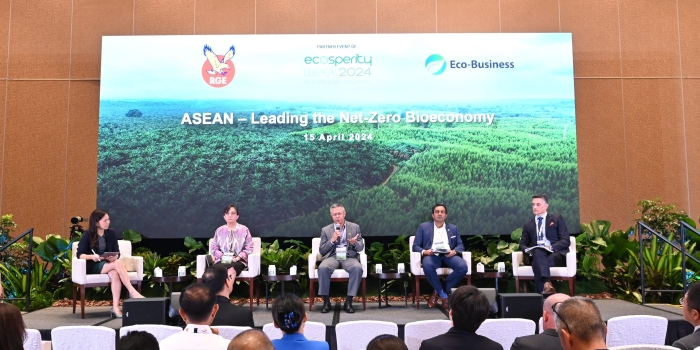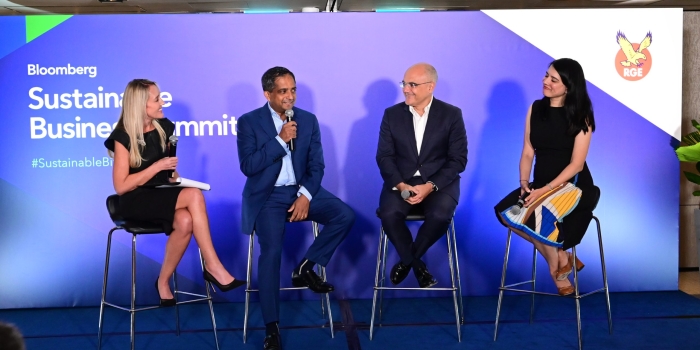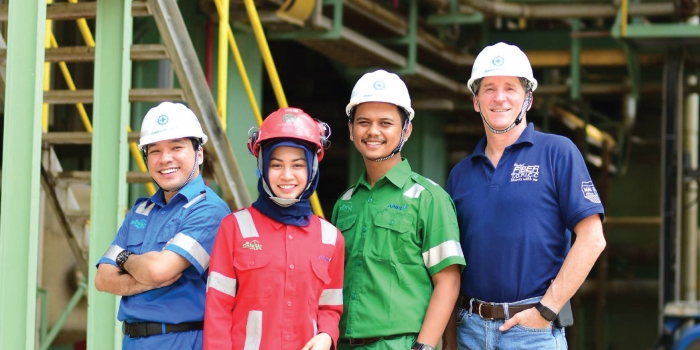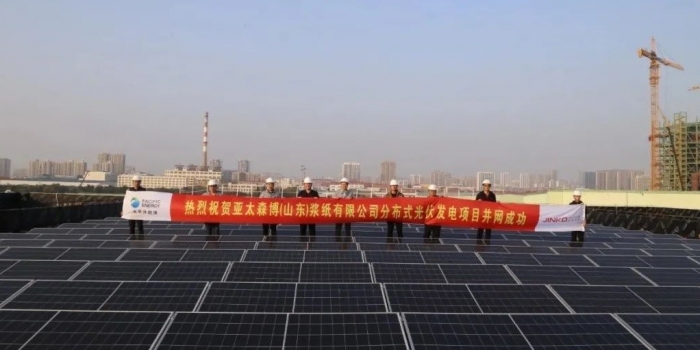From left: Jessica Cheam, Theresa Mundita Lim, Bey Soo Khiang, M. Sanjayan and Joris Dierckx.
Large bio producers, many of whom are operating in ASEAN countries, can lead the region’s net-zero transition by adopting a Production-Protection model. This can be supported by financiers providing innovative tools that create synergies between conservation and production to sustain funding for nature-based initiatives. This was the resounding message at a panel discussion hosted by RGE, in partnership with Eco-Business, at Ecosperity Week 2024.
Speaking on the panel were RGE’s Vice-Chairman Bey Soo Khiang, ASEAN Centre for Biodiversity’s Executive Director Theresa Mundita Lim, BNP Paribas’ Regional Head of Southeast Asia and CEO of Singapore Joris Dierckx and Conservation International’s Chief Executive Officer M. Sanjayan. The panel was moderated by Eco-Business’ Founder Jessica Cheam.
A Need for Robust Policies
Jessica begun the session by setting the stage: “Our economies are heavily reliant on the rich biological resources that exist in this region. The ASEAN bioeconomy currently employs 8% of the global workforce and generates over $2.3 trillion annually.”
However, policy dialogues on governing the bioeconomy have lagged behind its rapid growth. Theresa emphasised the need for robust policies to incentivise investments in biodiversity protection and catalyse the true valuation of nature’s services.
Theresa stated: “We need to develop policies that encourage more investment for biodiversity protection by identifying the real economic value of our biodiversity while accounting for our social and cultural uniqueness.”
Strengthening regional cooperation is crucial, as she highlighted ongoing efforts between the ASEAN Centre for Biodiversity and the ASEAN Business Advisory Council to establish biodiversity-friendly investment standards across member states.
Producing and Protecting as a Business Model
Sharing RGE’s example of a Production-Protection operating model, Soo Khiang described the company’s series of initiatives on the ground, including establishing a protection ring of plantations around its conservation areas to prevent illegal encroachment, poaching and logging, establishing a community-led fire-free village programme to eliminate fires, and setting up a Conservation Fund to sustain its conservation and restoration efforts.
He elaborated: “What is important is that the conservation areas need consistent funding, which very few privately-owned companies or NGOs are able to afford on a long term basis. Because of this, the company decided that for every ton of wood that we bring to the mill, we commit $1 to a dedicated Conservation Fund supporting restoration, biodiversity research and operational costs within these protected areas.”
This commitment applies to Indonesia and Brazil where RGE’s plantations are located. In Brazil, RGE manages over 400,000 hectares of plantations alongside more than 200,000 hectares of government-designated conservation areas.
Where RGE does not have plantations, for example in China, RGE collaborates with Conservation International on wetland preservation and water quality initiatives in the Poyang Lake basin, home to critically endangered species like the Siberian Crane and Finless Porpoise.
Soo Khiang also highlighted that ASEAN, with its position as a leading palm oil producer, has a tremendous opportunity to play a major role in using agri waste and residue and used cooking oil to decarbonise the aviation and maritime industries. “Replacing traditional jet fuel with sustainable aviation fuel can cut carbon emissions by up to 80%. The International Civil Aviation Organization estimates that 65% of the aviation industry’s path to net-zero emissions by 2050 relies on sustainable aviation fuel. This presents a significant opportunity for ASEAN to play a major role in reducing global carbon emissions from aviation,” he said.
He emphasised the imperative of aligning business growth with environmental and social stewardship: “As a big group of companies operating at the heart of the bioeconomy, we need to develop our business in a responsible way. The tone is set from our business philosophy to do good for the community, country, climate, and customers, and only then will it be good for the company.”
A Case for Investing in Nature
M. Sanjayan cited the benefits of investing in nature. He said: “Poyang Lake is very important for birds and wildlife. It is also important for 14 million people who depend on that lake, both for industrial purposes and for drinkable water. We work with companies like Sateri (under the RGE group of companies) to provide wetland creation and clean water creation within the lake basin. Sateri benefits from it because its business is predicated on having clean water. In turn, they are providing a global good.”
“If we take this one step further, and find a way now to monetise it, for example with water credits, we can put some level of monetary value to the investments that are made,” he added.
Making a case for investing in nature, M. Sanjayan asked: “What would businesses invest in today that’s going to be around in 30 years or 50 years? The one thing I know for sure is that nature in the future will be more valuable than it is today.”
Catalysing the Transition through Financing
While the private sector can invest in nature, the financial industry plays a pivotal role in catalysing the bioeconomy’s transition.
Joris highlighted the bank’s guiding principles that can reward the good players and penalise the bad ones. He said: “When we look at allocating capital and client relationships, we do not work with clients who do not apply global ESG standards, are involved in deforestation or do not respect community rights. Then we conduct an assessment of all the ESG risks that our clients are exposed to, how they can mitigate those risks, and how they can turn them into opportunities. In the near future, we also hope to incorporate the pricing of natural capital.”
In addressing the challenges in quantifying nature’s true value within market mechanisms, and projects that contribute to biodiversity but have not been priced by the market, Joris responded by saying that they are working with the public sector, multilateral development institutions and philanthropic capital to bridge the funding need.
The Formula for Success
Using RGE’s production-protection model as an example of the way forward, M. Sanjayan said: “The whole idea of balancing nature needs with human needs – it doesn’t work. Without a doubt, human needs will win. We need to link production to protection. Then it becomes the inherent interest of businesses to protect in order to stay in business.”
In conclusion, Soo Khiang pointed out that in the realm of sustainability, there is a cost to inaction as well as action. As long as the overall direction is sound, it is often better to act decisively. “How did we end up with $1 for every ton of wood? There is no magic formula to get to this number. But let’s start and see if $1 is enough to fund the operational activities. If it is not enough, we have to increase it further. This is how the private sector operates. There is no magic formula. If the general direction is correct, we act and fine-tune along the way,” he said.






